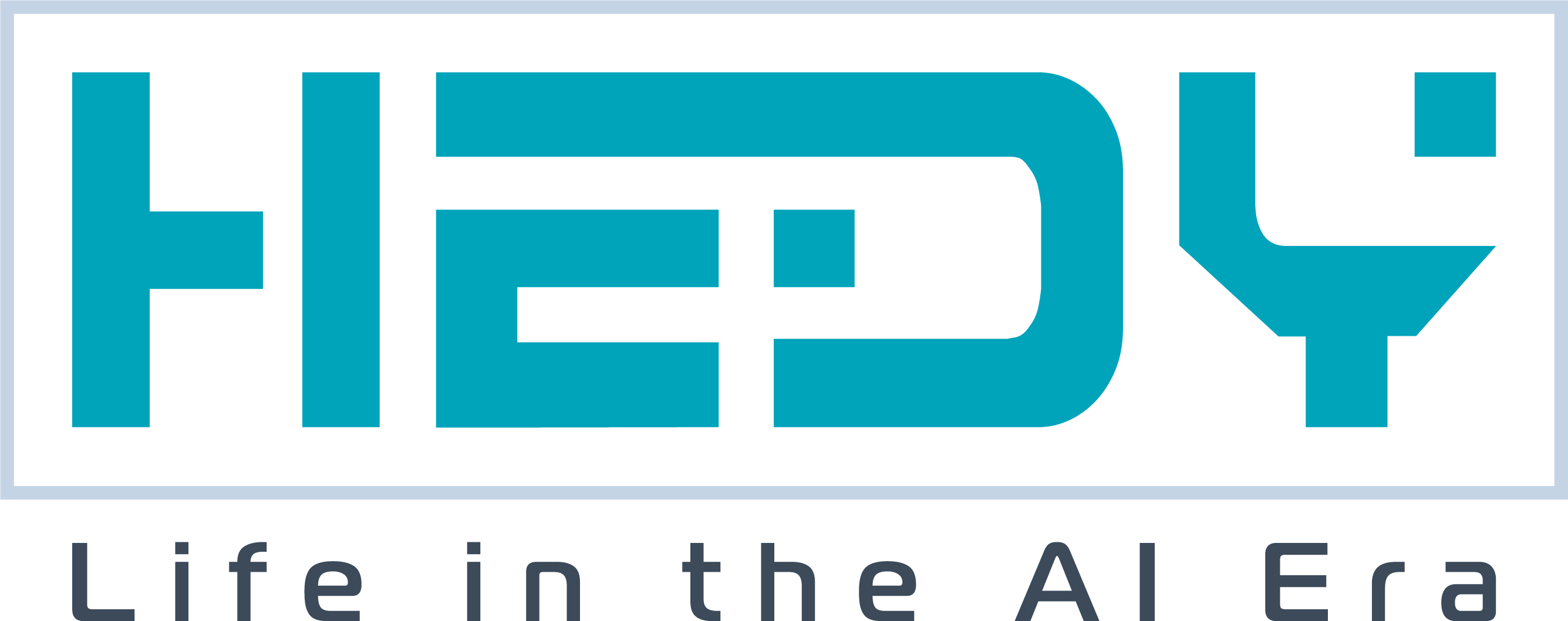TIMING project
 Towards a smart and efficiency telecom infrastructure meeting current and future industry needs
Towards a smart and efficiency telecom infrastructure meeting current and future industry needs
January 2022 – December 2024
TSI-063000-2021-145, TSI-063000-2021-148, TSI-063000-2021-149
Identifying Industry 4.0 as a key vertical, TIMING targets to design a solution to enable e2e reliable TSN services supported by operators’ infrastructures that are currently carrying on a best effort basis. TIMING consists of three subprojects: SP-1, SP-2, and SP-3.
TIMING-SP1 will analyze TSN support in the Ethernet and Wi-Fi segments and identify the enhancements to be made for supporting the sub-millisecond latency for TSN systems. Scheduling solutions to support these enhancements will be devised. In addition, solutions to automate the deployment of e2e TSN services with assured performance will be designed. Such service automation relies on a control plane, which will include a TSN controller able to control and monitor Ethernet and Wi-Fi TSN nodes, a TSN Connectivity Manager to provide e2e connectivity across TSN and non-TSN segments, and a QoS estimation tool that includes accurate TSN traffic models. Finally, TIMING SP-1 will maximize impact by influencing major vendors and service providers on the adoption of the developed principles through communication, dissemination, and standardization activities, while exploiting the results and knowledge obtained, and contributing to the digital transition of the industry and the green deal.
TIMING SP-2 will develop solutions to support TSN in the Ethernet and Wi-Fi segments ensuring the sub-millisecond latency. Scheduling solutions to support these enhancements will be developed and assessed. In addition, solutions to automate the deployment of e2e TSN services with assured performance will be developed and assessed. Such service automation relies on a control plane, which will include a TSN controller able to control and monitor Ethernet and Wi-Fi TSN nodes, a TSN Connectivity Manager to provide e2e connectivity across TSN and non-TSN segments, and a QoS estimation tool that includes accurate TSN traffic models. In TIMING SP-2 the different components will be integrated and to build to validate the whole architecture.
TIMING SP-3 will build PoC demonstrators validating the whole TIMING architecture. The POC will demonstrate: (1) at the modeling level, a tool that evaluates the performance of the new TSN service to be deployed and the impact on the existing services (TSN and/or BE traffic); (2) at the control plane, the capability to deploy reliable e2e TSN services with committed performance in terms of e2e delay; and (3) at the infrastructure level, the capability to transport TSN traffic between two TSN domains: one with Automated Guided Vehicles (AGVs) emulating a factory, and the other with the AGV’s controller, which requires bounded latency communications with the AVs; other services for loading the system will be also included.
HEDY project
November 2021 – November 2023
2021-1-HU01-KA220-HED-000029536
HEDY – Life in the AI era is a 2-year Erasmus+ project started in November 2021. In its own title, it provides tribute to Hedy Lamarr, an Austrian actress and inventor (1914-2000), co-creator of wireless communications technology, adopted to control torpedoes during World War II and currently still used in
mobile networks, Bluetooth devices and Wi-Fi.
Hedy stands for being a free and accessible source of information regarding the digital technologies of the 4th industrial revolution (Industry 4.0), namely Artificial Intelligence (AI), by enlightening its possible positive future applications, whilst clarifying the possible impacts, including threats to the European Convention of Human Rights (ECHR) and democracy, being of “utmost importance that AI is discussed and that the public is informed if we are to embrace whatever opportunities it creates in a manner that is human-centred, ethical, secure, and true to European values” (EC, 2020). The main target (but not exclusive) of
this project is higher education audience.
Four specific objectives will be produced to reach this goal:
- A Booklet – an essay defining the HEDY position on Life in the AI Era and the rationale for that position. It organizes the AI features and positive impacts, risks associated with certain uses and identifies challenges, opportunities and expected impacts with paradigmatic examples, offered in an engaging way to stimulate reflection and debate on knowledge society topics;
- A Toolkit – a collection of influential audio-visual tools, showing how AI could tackle some of the world’s most challenging societal issues, as well as the risks to be mitigated if AI realizes its full potential, to be used flexibly to support learning and debate activities. It includes fictional and factual films & documentaries and expert speeches, of which five to be produced under Hedy;
- A Massive Open Online Course (MOOC) – a course to promote extensive knowledge, critical reflection and debate on AI and its key impact on society. It will be free and open access for participants, with interactive forums. The course will be structured in 5 modules and authored by experts. Participants can share ideas and get deeply involved in AI subjects via a variety of online activities;
- A Guideline – a concise and easy-to-read documentation explaining the nature of the HEDY learning resources, the best use of the assets produced and a glossary with key terms on AI related topics. It will help to create a solid foundation for ensuring the usability of the HEDY results by a wider community of practice network, even after the end of the project.
The first HEDY Multiplier Event was celebrated in Barcelona, May 16, 2022.
Video briefly presenting the HEDY project.
Video presenting the Booklet.
This workshop focused on validating the first result, namely the Booklet. It aimed at offering a comprehensive and shared view of how AI is affecting our lives and reshaping our socioeconomic, cultural, and human environments by promoting critical reflection, self-based learning and discussion on these issues. In this workshop, we presented the results of our two-fold approach to build our rationale about the challenges, opportunities and expected impact of AI on four topics: business, governance, skills/competencies, and people/lifestyle.
The workshop was located at Sala d’Actes del Vèrtex, Universitat Politècnica de Barcelona, Plaça d’Eusebi Gëull 6, Barcelona. Coordinates: 41.39063, 2.11392
Date: 05/16/2022
Hours: 9.30 – 13.30 (CET)
ALLIANCE project
 Architecting a knowledge-defined 5G-enabled
Architecting a knowledge-defined 5G-enabled
network infrastructure toward the upcoming digital society
January 2018 – September 2021
TEC2017-90034-C2-1-R
Leaving the current 4th generation of mobile communications behind, 5G will represent a disruptive paradigm shift integrating 5G Radio Access Networks (RANs), ultra-high capacity access/metro/core optical networks and intra-datacenter network and computational resources into a single converged 5G network infrastructure. Thanks to an extensive deployment of network virtualization techniques leveraged by Software-Defined Networking (SDN) and Network Function Virtualization (NFV) technologies, such a 5G network infrastructure will have to be capable of inter-connecting anything (people, things, processes, contents, etc.) anywhere, no matter the geographic location, and over a set of network services truly meeting their diverse communication requirements (e.g., in terms of bandwidth, latency, reliability, etc.). Furthermore, these network services will have to be orchestrated end-to-end over several network and IT resource segments with high scalability, dynamicity and reactivity upon unexpected traffic and resource state changes, all this in an energy-efficient fashion.
The present coordinated project proposal ALLIANCE ambitiously aims at architecting, from top to bottom, a converged 5G-enabled network infrastructure satisfying those needs to effectively realize the envisioned upcoming Digital Society. Joining the long expertise of two multidisciplinary research teams, ALLIANCE will investigate the appropriateness of several networking solutions for 5G, such as SDN/NFV on top of an ultrahigh capacity spatially and spectrally flexible all-optical network infrastructure, or the OpenOverlayRouter (OOR) and the clean-slate Recursive Inter-Network Architecture (RINA) over packet networks, including access, metro, core and datacentre networks. Evaluation activities will not only consist of theoretical and simulation-based results, but also experimental activities over representative network test-beds implementing the aforementioned networking solutions for 5G, as a way to completely assess their performance in real network scenarios. ALLIANCE relies on cognitive QoE-driven management and orchestration, which optimises level service quality without network resource over-provisioning. In particular, an ambitious goal of the ALLIANCE proposal is to design and implement a Knowledge-Defined Networking (KDN)-based orchestration layer, implementing Deep learning (DL) techniques toward optimal end-to-end service provisioning. Last but not least, on the RAN segment, efforts will also be devoted in ALLIANCE to investigate on novel graphene mmWave-THz antenna systems for their potential use in 5G, as well as protocols for applications like Wireless Network on Chip (WNoC).
As a final coordinated task, some of the prototypes developed by the two ALLIANCE sub-projects will be integrated in an proof-of-concept, which will demonstrate the feasibility and functionality of the 5G-enabled ALLIANCE network infrastructure, and its composing networking solutions
ERASER project
 Experimenting with real application-specific
Experimenting with real application-specific
QoS guarantees in a large-scale RINA demonstrator
March 2018 – Septembre 2018
Fed4FIRE+ Open Call 3
Over the last several years, large research attention has been given to clean-slate network architectures for the Future Internet, capable of efficiently and effectively solving the well-known limitations of the current TCP/IP-based Internet architecture, e.g., in terms of routing scalability, application-specific Quality of Service (QoS) delivery or built-in security. In this context, the Recursive InterNetwork Architecture (RINA) has emerged as a very promising architectural solution to address these challenges. Such is the case, that a substantial number of European research projects have been funded to date to bring RINA closer to its eventual 5G market adoption (FP7 IRATI, FP7 PRISTINE, GEANT3+ Open Call IRINA, H2020 ARCFIRE).
To keep paving the way to this ambitious goal, large-scale experimental validations as enabled by the Fed4FIRE+ Federation of test-beds become of paramount importance. The present proposal for a medium experiment, ERASER, targets a larges-cale experimental evaluation of the real QoS guarantees that RINA can deliver to heterogeneous applications. A RINA test-bed composed of 87 nodes will be considered, emulating a 5G
metro/regional network scenario spanning from the end-user terminal until the virtual machines where applications run in a datacentre. To illustrate the QoS capabilities of RINA, we have chosen high-definition video streaming as our test application, for which the end-user quality of experience will be validated under different load conditions by injecting synthetic traffic in the network reproducing real application traffic.
Our experiments, never performed before nor in the roadmap of the currently running project H2020 ARCFIRE, will also shed light on the most appropriate deployments of the QoS policies in the recursive stack of layers (e.g., only at the bottom in the metro/regional network segment, or only at the top close to applications and end-users, or at all network layers), collecting measurements of the obtained QoS metrics for each deployment case.
2017 SGR 01037
 Communications and Broadband Architecture (CBA) research group
Communications and Broadband Architecture (CBA) research group
January 2017 – December 2020
2017 SGR 01037
The CBA research group is recognised both as a research group of the UPC and as a consolidated research group of the Catalan Government Generalitat de Catalunya (005SGR-00481 for the period 2005-2008, 2009SGR-1140 for the period 2009-2013, and 2014SGR-1427 for the period 2014-2016).
COSIGN FP7 project
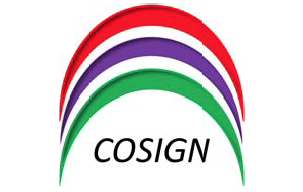 Combining optics and SDN in next generation data centre networks
Combining optics and SDN in next generation data centre networks
January 2014 – December 2016
FP7-619572
COSIGN proposes a new DC architecture empowered by advanced optical technologies and will demonstrate novel solutions capable of sustaining the growing resource and operational demands of next generation DC Networks. COSIGN aims to move away from today’s vendor specific, manually controlled, performance and scale limited DCs towards scalable DC solutions able to support future-proof dynamic, on demand, low-latency, energy efficient and ultra-high bandwidth DC solutions. COSIGN introduces disruptive transformations in the data plane, significant advances to the control plane and major innovations in the DC virtualization and service orchestration:
- In the DC Data Plane, COSIGN will deliver an entirely-optical solution enabling scalable top-of-rack switches, ultra-low latency and high volume DC interconnects with high spatial dimensioning.
- In the DC Control Plane, COSIGN will build upon and extend the Software Defined Networks (SDN) paradigm leveraging capabilities from high-performance optical technologies while developing technology agnostic protocols for software/user defined routing and control.
- For the DC Management and Orchestration, COSIGN will implement a coherent framework for optical network and IT infrastructure abstraction, virtualization and end-to-end service orchestration.
COSIGN brings together a unique combination of skills and expertise able to deliver, for the first time, a coordinated hardware and software architecture, which will guarantee the scale and performance required for future DCs. Results will be demonstrated in challenging industrial setting, leveraging a DC validation platform from Interoute – a leading European service provider.
PRISTINE FP7 project
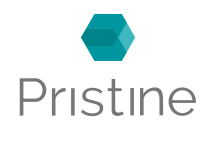 Programmability in RINA for European Supremacy of Virtualized Networks
Programmability in RINA for European Supremacy of Virtualized Networks
January 2014 – October 2016
FP7-619305
The Internet as the global communications infrastructure has been successful in shaping the modern world by the way we access and exchange information. The Internet architecture originally designed in the 1960s has been supporting a variety of applications and offering a number of services till now but emerging applications demand better quality, programmability, resilience and protection. Any alterations to the Internet architecture have become restricted to simple incremental updates and plug-ins instead of radical changes by introducing new solutions.
RINA, the Recursive InterNetwork Architecture, is an emerging clean-slate programmable networking approach, centring on Inter-Process Communication (IPC) paradigm, which will support high scalability, multi-homing, built-in security, seamless access to real-time information and operation in dynamic environments. The heart of this networking structure is naturally formed and organised by blocks of containers called Distributed Information Facilities (DIFs) where each block has programmable functions to be attributed to as they required. A DIF is seen as an organizing structure, grouping together application processes that provide IPC services and are configured under the same policies. Virtualization is a fundamental attribute of the architecture itself. Based on the above fundamental aspect, PRISTINE intends to:
- Design, develop and implement the innovative internals of this clean-slate architecture that include the programmable functions for: security of content and application processes, supporting QoS and congestion control in aggregated levels, providing protection and resilience, facilitating more efficient topological routing, and multi-layer management for handling configuration, performance and security.
- Demonstrate the applicability and benefits of this approach and its built-in functions in use-cases driven by the end-users, service providers and equipment vendors in the consortium. This will ensure that the applications and tools we develop will be deployable by providers, and have a greater potential for future exploitation.
Measurement Tools and Dataset repository
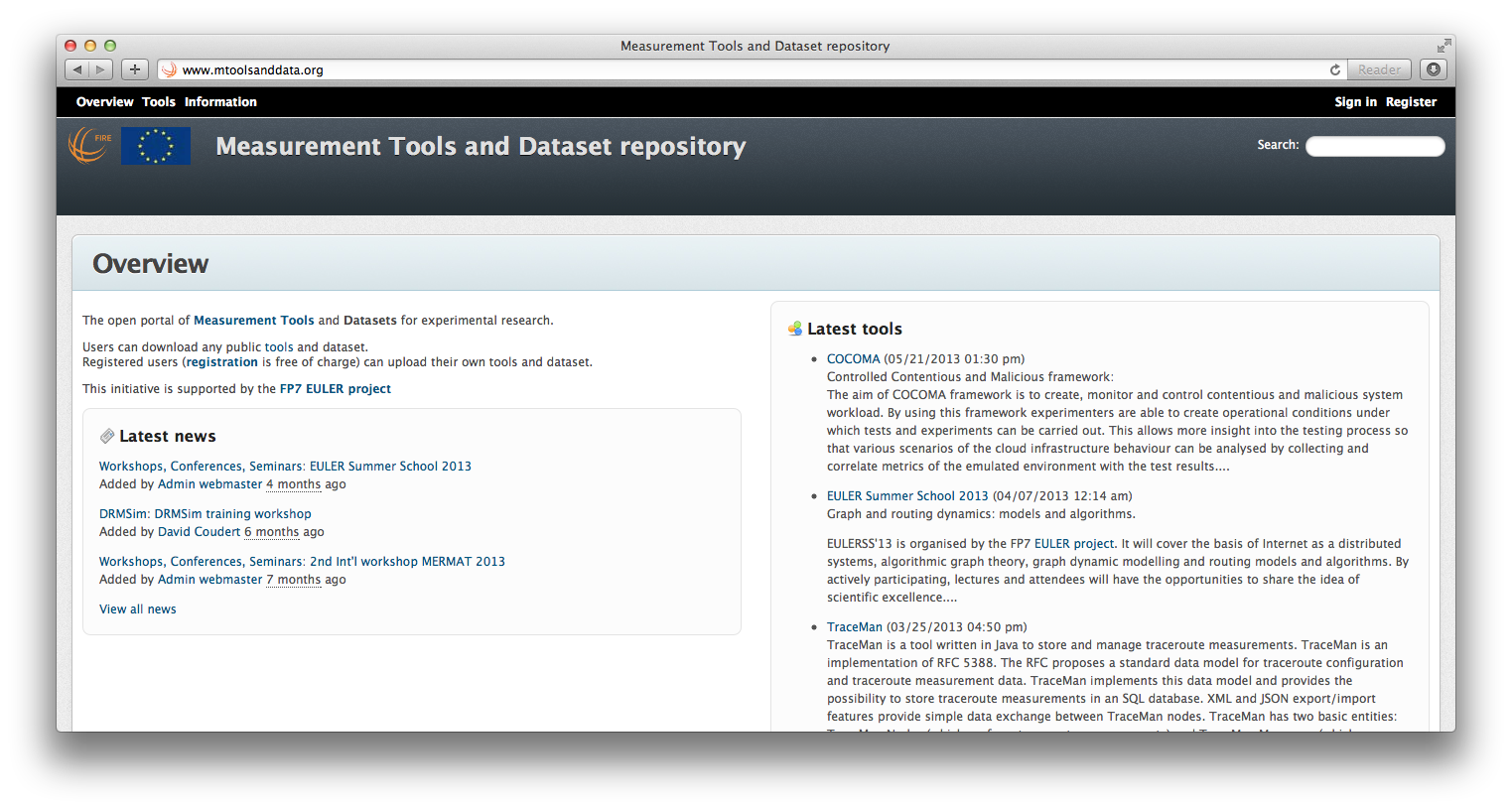 The open portal of Measurement Tools and Datasets for experimental research.
The open portal of Measurement Tools and Datasets for experimental research.
Users can download any public tools and dataset. Registered users (registration is free of charge) can upload their own tools and dataset. This initiative is supported by the FP7 EULER project.
Its general functionalities are:
- Easy access to the tools
- RSS feed
- A search engine
- A wiki/FAQ guide to the basics of the portal
- Two forums for getting help or discussing about the portal
Each tool uploaded obtains these functionalities:
- Overview with brief information about its scope
- Contact information of its developers
- Wiki page to describe its details
- Recent activities (e.g. an update, new module, new documentations, etc.)
- Possibility to publish news
- Add user and technical documentations
- Repository of files with subversion support
SUNSET project
 Sustainable Network Infrastructure Enabling the Future Digital Society
Sustainable Network Infrastructure Enabling the Future Digital Society
January 2015 – June 2018
TEC2014-59583-C2-2-R
The ICT eco-system has been rapidly and dramatically changing in the last several years. Emerging cloud services, mobile and social network technologies are creating new communication patterns, requiring architectural changes to the underlying networks in order to enable scalable growth in traffic volume, while supporting a high level of dynamic connectivity where applications and application components are frequently provisioned, released, and moved around. SUNSET project focuses on overcoming the existing bottlenecks of current architectural solutions to provide a successful support of the future Digital Society, paving the way to new-coming cloud ICT services as well as enhancing a sustainable use of these services by mature economic sectors, improving this way their competitiveness through cloud ICT technologies. More specifically, SUNSET proposes a novel architecture including all network segments (access, metro, core) and data centre network, empowered by advanced optical technologies and Software Defined Networking (SDN), capable of sustaining the growing resource and operational demands of next generation networks.
SUNSET aims to achieve several objectives as:
- Researching and developing modulation techniques and signal processing techniques for a 10x improvement in transmission data rate in metro-access networks using low cost commercial devices.
- Developing SDN-enabled nodes implementing elastic wavelength and space multiplexing as well as to implement SDN controllers able to manage legacy optical equipment.
- Designing and developing SDN-based orchestration frameworks, SDN-enabled monitoring capabilities, resource optimization algorithms, and investigating future SDN technologies.
- In the long term, SUNSET also investigates further reducing power consumption and enhancing performance at larger scales higher factors of 100 to 1000 in medium-long terms, by hybrid photonic and wireless technologies towards Data-Centres-in-a-Box, supported by new nanostructured materials.
Definitely, the SUNSET project brings together a combination of expertise and resources to deliver novel scalable and future-proof network overall infrastructure solutions.
CBA 2014SGR1427
 Communications and Broadband Architecture (CBA) research group
Communications and Broadband Architecture (CBA) research group
January 2014 – December 2016
2014 SGR 1427
The CBA research group is recognised both as a research group of the UPC and as a consolidated research group of the Catalan Government Generalitat de Catalunya (2005SGR-00481 for the period 2005-2008, 2009SGR-1140 for the period 2009-2013, and 2014SGR-1427 for the period 2014-2016).
LIGHTNESS FP7 project
 Low latency and high throughput dynamic network infrastructures for high performance datacentre interconnects
Low latency and high throughput dynamic network infrastructures for high performance datacentre interconnects
November 2012 – October 2015
FP7-318606
The main objective of the LIGHTNESS project is the design, implementation and experimental evaluation of a high-performance network infrastructure for data centres, where innovative photonic switching and transmission solutions are deployed. Harnessing the power of optics will enable data centres to effectively cope with the unprecedented demand growth to be faced in the near future, which will be driven by the increasing popularity of computing and storage server-side applications in the society. Indeed, the deployment of optical transmission systems leveraging Dense Wavelength Division Multiplexing (DWDM) allows the transmission of more than a hundred of wavelength channels operating at 10, 40, 100 Gb/s and beyond. This effectively results in “unlimited” bandwidth capacities of multiple Terabit/s per fibre link, which can be efficiently utilized through next-generation all-optical switching paradigms like Optical Circuit Switching (OCS) or Optical Packet Switching (OPS). In this context, LIGHTNESS will join efforts towards the demonstration of a high-performance all-optical hybrid data plane for data centre networks, combining both OCS and OPS equipment to implement transport services tailored to the specific applications’ throughput and latency requirements. To this goal, an OPS node suitable for intra- data centre connectivity services will be developed and prototyped during the project, together with an enhanced Top of the Rack (TOR) switch seamlessly connecting servers in each rack to the hybrid OCS/OPS inter-cluster network. As an additional achievement of LIGHTNESS, the OCS/OPS inter-cluster network will be empowered with a network control plane able to dynamically provision flexible connectivity services in the hybrid OCS/OPS data centre network. Such a control plane will also be developed and prototyped for integration in the final LIGHTNESS demo throughout the project.
EULER FP7 project
 Experimental UpdateLess Evolutive Routing
Experimental UpdateLess Evolutive Routing
October 2010 – June 2014
FP7-258307
The main objective of the EULER exploratory research project is to investigate new routing paradigms so as to design, develop, and validate experimentally a distributed and dynamic routing scheme suitable for the future Internet and its evolution. The resulting routing scheme(s) is/are intended to address the fundamental limits of current stretch-1 shortest-path routing in terms of routing table scalability but also topology and policy dynamics (perform efficiently under dynamic network conditions). Therefore, this project will investigate trade-offs between routing table size (to enhance scalability), routing scheme stretch (to ensure routing quality) and communication cost (to efficiently and timely react to various failures). The project will develop appropriate tools to evaluate the performance of the proposed routing schemes on large-scale topologies (order of 10k nodes). Prototype of the routing protocols as well as their functional validation and performance benchmarking on the iLAB experimental facility and/or virtual experimental facilities such as PlanetLab/OneLab will allow validating under realistic conditions the overall behaviour of the proposed routing schemes.
DOMINO
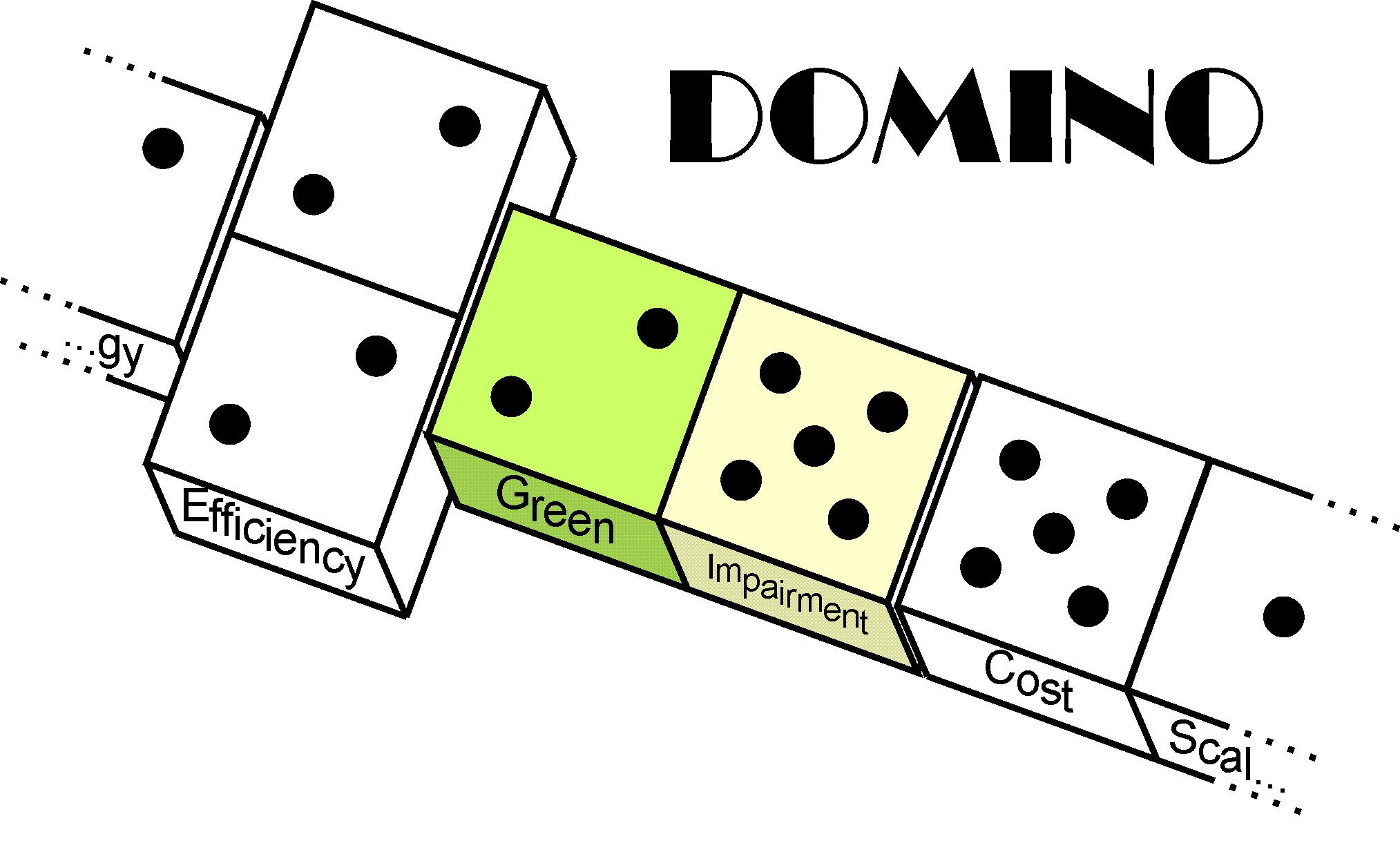 Design and optimization of multi-layer green optical networks
Design and optimization of multi-layer green optical networks
January 2011 – December 2014
TEC2010-18522
The DOMINO project aims at designing novel architecture, algorithms and protocols solutions fulfilling the energy efficiency and awareness requirements of future multi-layer green optical networks. DOMINO leverages the capacities of ultra high dynamic multi-layer optical networks to decrease the ICTs carbon footprint, and relies on five innovative concepts: a thorough analysis of the energetic issues in networks, including the benefits of using novel sub-wavelength switching devices and extending the energy-oriented model to multi-domain scenario; novel network planning strategies accounting for energy, cost and performance metrics; specialised dynamic routing algorithms where multiple constraints such as energy consumption, resource utilisation, and signal quality are optimised; energy-oriented operations and protocols in the network control plane to support the designed strategies and algorithms; dedicated techno-economic studies to evaluate the overall impact the novel concepts have on current network infrastructure and provide a possible migration roadmap.
COST IC804
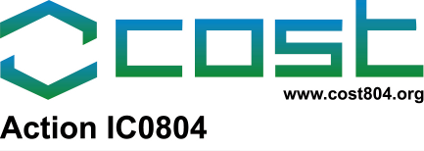 Energy efficiency in large scale distributed systems
Energy efficiency in large scale distributed systems
23 January 2009 – 4 May 2013
ICT Action IC0804
This COST Action will propose realistic energy-efficient alternate solutions to share IT distributed resources. While much effort is nowadays put into hardware specific solutions to lower energy consumptions, the need for a complementary approach is necessary at the distributed system level, i.e. middleware, network and applications. The Action will characterize the energy consumption and energy efficiencies of distributed applications. Then based on the current hardware adaptation possibilities and innovative algorithms it will propose adaptive and alternative approaches taking into account the energy saving dimension of the problem. The Action will characterize the trade-off between energy savings and functional and non-functional parameters, including the economic dimension.
STRONGEST FP7 project
 Scalable Tunable and Resilient Optical Networks Guaranteeing Extremely-high Speed Transport
Scalable Tunable and Resilient Optical Networks Guaranteeing Extremely-high Speed Transport
January 2010 – December 2012
FP7-247674
STRONGEST leverages on the definition of innovative architectures for developing a scalable, resilient and cost-effective transport network, offering ultra-high capacity to the end users in the broadband society of the future. The new architectures will take into account the evolution of the access network technologies, in order to ensure transparent core-access integration, but the studies carried out by the project will focus mainly on the metro and core areas, because these are the part of the network where the main scalability issues are foreseen in the next years.
FIERRO
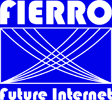 Future Internet: Eficiencia en las redes de altas prestaciones
Future Internet: Eficiencia en las redes de altas prestaciones
May 2011 – September 2012
TEC2010-12250-E
FIERRO es una Red Temática que agrupa a 21 Universidades, Centros de Investigación y empresas españolas, que investigan en los retos tecnológicos que la Internet del Futuro (Future Internet) plantea en la red IP de altas prestaciones. Con esto nos referimos a las redes de comunicaciones de alta velocidad, por ejemplo con agregados de tráfico de 10 Gbps en adelante.
COPERNIC
Pervasive and Convergent Networking
January 2010 – December 2010
TEC2009-13252
The main goal of this project is to contribute in the design of technologies for a converged and pervasive Internet. The project aims to push new services and protocols into the network considering them as coupled processes. To do that, we will take into consideration four of the most relevant aspects that are currently of interest of the research community in this field. These are the optical transport, the ubiquitous connectivity, the application of a traffic analysis and monitoring techniques for the management and control of the network, and the security of communications. In order to address these aspects the project is structured in the following research activities: Architectures for the Pervasive Networking, Traffic monitoring and analysis, Converged Optical Networking Infrastructure, and Digital Identity and Electronic Signature, which coincide with of the different subareas of expertise of the Broadband Communication Systems research group that traditionally have exploited participating in separated projects.
BONE FP7 project
 Building the future optical network in Europe
Building the future optical network in Europe
January 2008 – February 2011
FP7-216863
BONE intends to validate the research activities within Europe in the field of optical networks by stimulating intensified collaboration, exchange of researchers and building on Virtual Centres of Excellence.
DICONET FP7 project
![]() Dynamic impairment constraint network for transparent mesh optical networks
Dynamic impairment constraint network for transparent mesh optical networks
January 2008 – June 2010
FP7-216338
DICONET plans to investigate, design, implement and test new routing and wavelength assignment algorithms considering as constraints physical impairments that arise in transparent core networks.
CATARO
Proyecto coordinado para a evaluación de tecnologías y arquitecturas de redes ópticas
December 2005 – December 2008
TEC2005-08051-C03-01
The purpose of the CATARO project (a coordinated project for the evaluation o optical networks technologies and architectures) is to continue the studies carried out in two previous projects, namely TRIPODE (IP traffic transport over Optical networks: Designing and Evaluation, Ref.: TIC2002-04344-C02) and CARISMA (Connection and access to RedIRIS2 through a multi-channel optical ring, CICYT TIC2000-0304-P4-04). Thereby, the CATARO project consists of two subprojects, namely SENDERO (Designing and Evaluation of optical network architectures Ref.: TEC2005-08051-C3-01) and RINGING (GMPLS/ASON Intelligent Network: Integration of reconfigurable nodes, Ref.: TEC2005-08051-C3-02), which are summarized next.
